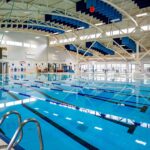BC Wildlife Federation's BC Rivers Day: The New Normal is anything but normal
September 24, B.C. Rivers Day highlights the decline of the province’s vital arteries
It is tempting to shrug off the latest catastrophic wildfire season as The New Normal and throw up our hands about the damage that incinerated forests do to B.C. rivers and fish habitat.
Forest fires are normal, natural, and even rejuvenating for the landscape and wildlife.
But the wildfires that have swept across the province this summer and over the past seven years are not normal, according to the B.C. Wildlife Federation.
Because of fire suppression regimes that Smokey the Bear perpetrated on behalf of commercial interests, recent wildfires are are hotter, more severe, and much harder to control than fires that occured historically.
This year’s record-shattering fire season will soon give way to precipitation, and possibly atmospheric rivers, which have caused flooding across B.C. in recent years.
B.C. government technical reports note that erosion, slides, flooding and sedimentation increase after severe wildfires. Severe wildfires also leave water-repellant soil in their wake, leading to fast-moving runoff, erosion and even landslides.
That is very bad news for B.C. rivers and fish.
The good news is that our government knows what to do. Their own experts have been quite explicit.
In a 2022 special report titled, Forest Practices and Water: Opportunities for Action, the Forest Practices Board notes that:
- There are no legal requirements to assess the impacts of forest practices in most B.C. watersheds.
- Current forest practices contribute sediment into streams.
- Historical forest practices negatively affect water quality.
How we manage forests after a fire matters, too, especially where salvage logging is allowed.
The government’s own guidance published following the 2017 wildfires states: “Increased runoff and erosion resulting from salvage logging alters river hydrology by increasing sediment loads and the frequency and magnitude of high flows. These changes alter the character of river channels and may cause harm to a range of aquatic species.”
As our summers get hotter and drier and extreme precipitation events become more frequent, we need to change how we do business in B.C., beginning with an overhaul of our forest practices, increased funding for watershed management, and a program of controlled and cultural burns to reduce fuel loads and return forests to their natural condition.
“In addition, we need to restore and replant riparian areas around fish-bearing streams, regulate stream flows, employ natural ecological services such as beaver dam analogues, and manage our own water consumption in areas where surface water sources are under stress,” said BCWF Executive Director Jesse Zeman.
“The Nicola River, the Bonaparte, as well as rivers in the Okanagan and the Similkameen have major issues with low flows,” he said. “A recent mass die-off in the Cowichan River saw hundreds of salmon and trout killed by stresses related to low flows and unusually high water temperatures.”
The B.C. Wildlife Federation doesn’t just talk the talk. We walk the walk. Our members, clubs and volunteers contribute hundreds of thousands of hours each year to habitat and wetland restoration projects. We assess, restore, and monitor hundreds of wetlands, streams, and rivers, and engage in replanting efforts to restore riparian habitat at numerous locations each year.
BCWF and its partners will build more than 100 Beaver Dam Analogues across the province over the next three years to regulate flows and retain water on the landscape in sensitive watersheds.
“Beaver dams naturally help to moderate flows within watersheds, attenuating water during flood events, and allowing for the slower release in summer months, said Neil Fletcher, BCW Director of Cconservation Stewardship. “A rewetted landscape can also help to serve as natural fire breaks.”
“Populations of beaver were much more plentiful in the past, especially in our headwaters, and higher elevations.” he said. “Beaver Dam Analogues, are like starter kits for beavers. We’re working with First Nations and other local groups to bring them back to help us address the climate crisis.”
BC RIVERS DAY EVENTS
Millions of people around the world will take part in World Rivers Day, September 24, making it one of the largest one-day celebrations on the planet. This annual event has its roots in BC Rivers Day, which is in its 43rd year.
“World Rivers Day strives to increase public awareness of the importance of our waterways as well as the many threats confronting them”, said Mark Angelo, founder of both BC and World Rivers Day and Chair Emeritus of the Rivers Institute at the British Columbia Institute of Technology.
Local events include:
- Chilliwack River Salmon Run, fun-run, raffle prizes, and an eco-market with over 20 booths, September 23 (https://www.waterwealthproject.com/salmon-run/ )
- The Seymour River Hatchery in North Vancouver annual estuary clean-up and planting, September 24 (https://seymoursalmon.com/events/)
- World Rivers Day at the Burnaby Village Museum, September 24 (https://www.burnabyvillagemuseum.ca/EN/main/what-s-on/events-activities/world-rivers-day.html)
- New Westminster Riverfest, September 24 (https://fraserriverdiscovery.org/riverfest/)
- River cleanup, September 24, organized by the Chilliwack/Vedder Cleanup Society (http://www.cleanrivers.ca/)
- Alouette River Management Society 30th annual Ridge Meadows Rivers Day celebration, September 24 (https://alouetteriver.org/riversday)
To find or register an event in your community please visit https://www.orcbc.ca/bc-rivers-day
REFERENCES

























Comments